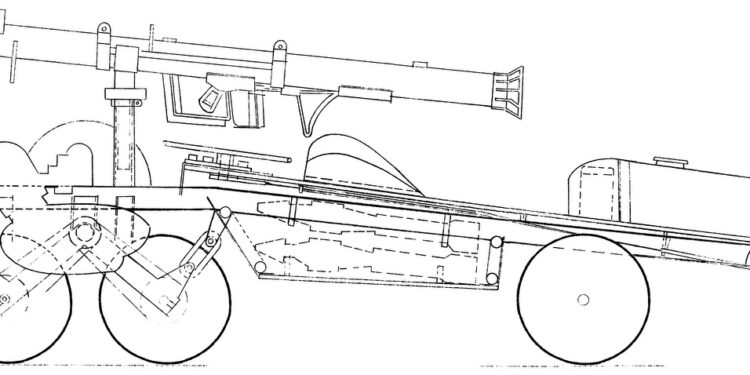By Michael Heidler –
On their advance through the conquered territories of the German Reich, the Allies often discovered development projects that had ended up on the drawing board. This was also the case with the Panzerhetzer as a motorized platform for the anti-tank rocket launcher Panzerschreck.
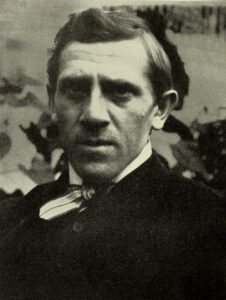
In February 1945, soldiers of the Ninth U.S. Army discovered some mechanical drawings of an unknown vehicle called the Panzerhetzer in the premises of the Neander Motorfahrzeug GmbH in Düren-Rölsdorf near the city of Aachen in North Rhine-Westphalia. However, they could not find any further documents about it, photographs or even finished individual parts. Nevertheless, it is an interesting design for the mobilization of the very effective Raketenpanzerbüchse, better known as Panzerschreck (tank fright) or Ofenrohr (stove pipe).
The company Neander Motorfahrzeug GmbH was founded in 1924 by Ernst Neumann, who called himself Neander. As an ingenious inventor, designer, painter, and illustrator, he was a very busy man. Today, he is mainly known for his three- and four-wheeled driving machines. Altogether, about 2,000 motorbikes and about 20 to 25 automobiles were produced until the dissolution of the company after his death in 1954. However, his great goal of creating a simple and affordable people´s car remained only a dream until the end because of the sale prices due to the handcrafted individual production.
Design
Neander seemed to have designed the Panzerhetzer on his own initiative, and it seems reasonable to assume that it was primarily intended to save his company during the difficult wartime period. In the autumn of 1940, he applied to the Wirtschaftsgruppe Fahrzeugindustrie (Economic Group of the Vehicle Industry) for community aid, which was devastatingly rejected: “The worthiness of your company to be preserved has been denied by the responsible district economic office”. At this time, Neander began to design a small motorbike for parachute dropping, as well as a motorized cart with rear steering. As can be seen from the drawing of 25 November 1943, the chassis for the Panzerhetzer was also designed as a tricycle, with two wheels in tandem arrangement at the front and one wheel each at the rear left and right. Steering was via the two rear wheels.
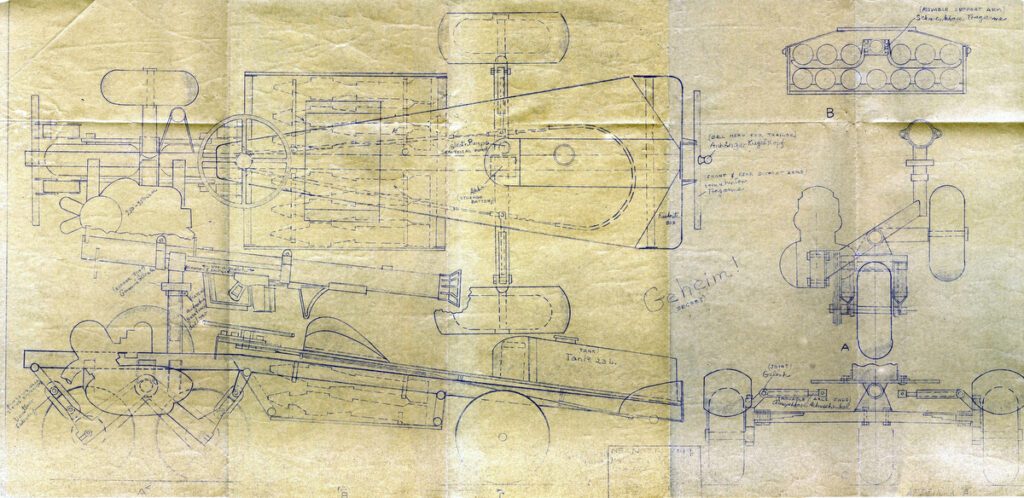
Likewise, the position of the driver is unusual; he lies on his stomach. Due to the forward sloping floor plate and an additional support for the driver’s chest, they can see forward and operate the steering wheel that’s placed flat in front of them. Thier right shoulder is directly behind the shoulder rest of the grenade launcher in order to be ready to fire immediately in case of an emergency. Their outstretched legs, in turn, reach past the fuel tank on the left and right.
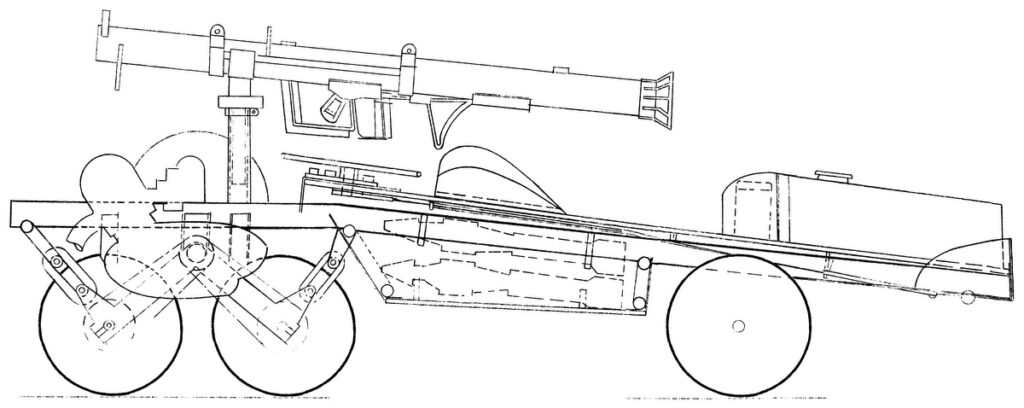
The Panzerhetzer was powered by a compact internal combustion engine, about which no technical data is available—except for the hand-written note “250-350 cc.” It is attached to the front left of the frame and drives both front tandem wheels by means of a chain drive. To compensate for its weight, the spare wheel sits opposite on the right side. The turning movement of the steering wheel was transmitted to the rear wheels via a revolving cable or chain. Interestingly, the drawing even shows a ball-head hitch at the rear, intended for an additional ammunition trailer also developed by Neander.
Armament

Above the tandem wheels, Neander placed a tube with a mount for the Raketenpanzerbüchse. It was slightly offset to the right to bring the weapon in front of the driver’s right shoulder. In addition, the weapon acted as a counterweight to the heavy engine on the other side. The mount on top of the tube could be swiveled in all directions and could be raised or lowered. To reload the rocket launcher from the rear, it could be pushed forward. There was a storage compartment for 13 rounds underneath the floor plate.
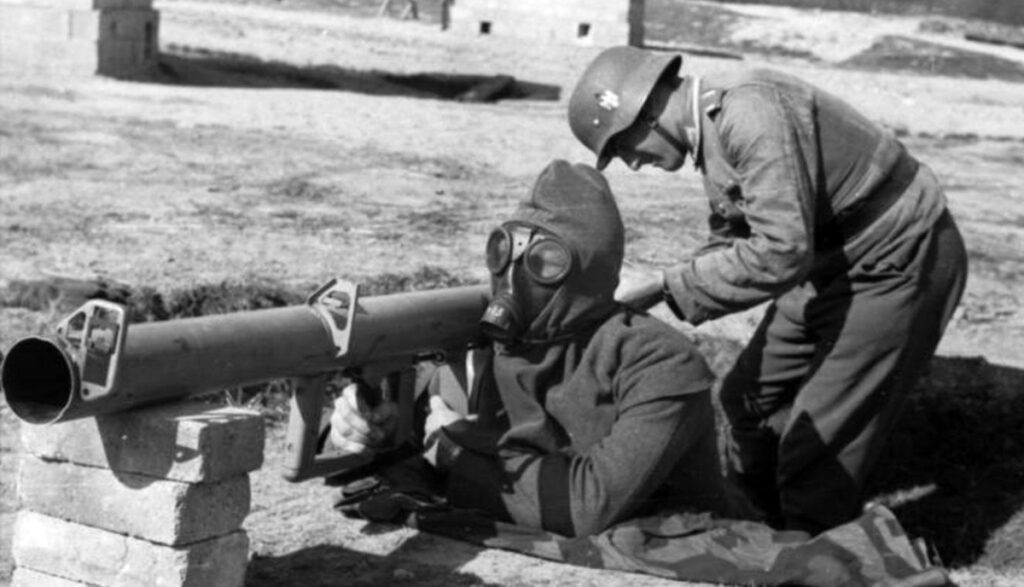
The 8.8cm rocket-propelled grenade with its hollow charge was very effective and feared by the enemy. At an optimal angle of impact, it could penetrate up to 160mm of armored steel. With the early rocket-propelled grenades, however, the gunners suffered from the combustion residues of the projectiles thrown back during firing, which is why a gas mask was often worn as a face shield. Later versions were fitted with a clip-on protective shield with a glass viewing window. Because of Neander’s weapon mount, however, it would not have been possible to attach it unmodified.
Trials and Reception
In 1943, Neander was allowed to demonstrate his Panzerhetzer to a delegation of the High Command of the Wehrmacht in Berlin. According to his diary entries, the vehicle impressed in maneuverability and cross-country mobility even under poor conditions. In November 1943, the company received an order for the production and delivery of two vehicles—one with hand operation and one with combined foot and hand operation. But it did not come to that, as Ernst Neumann fell seriously ill and had to spend many months in hospital. Afterwards, he continued working on the project again, as evidenced by a second surviving set of drawings with the designation Panzerhetzer III, dated 15 May 1944. Shortly before the end of the war, he put the design of the Panzerhetzer IV on paper. It was armed with six Panzerfäusten arranged in two packs of three on each side.
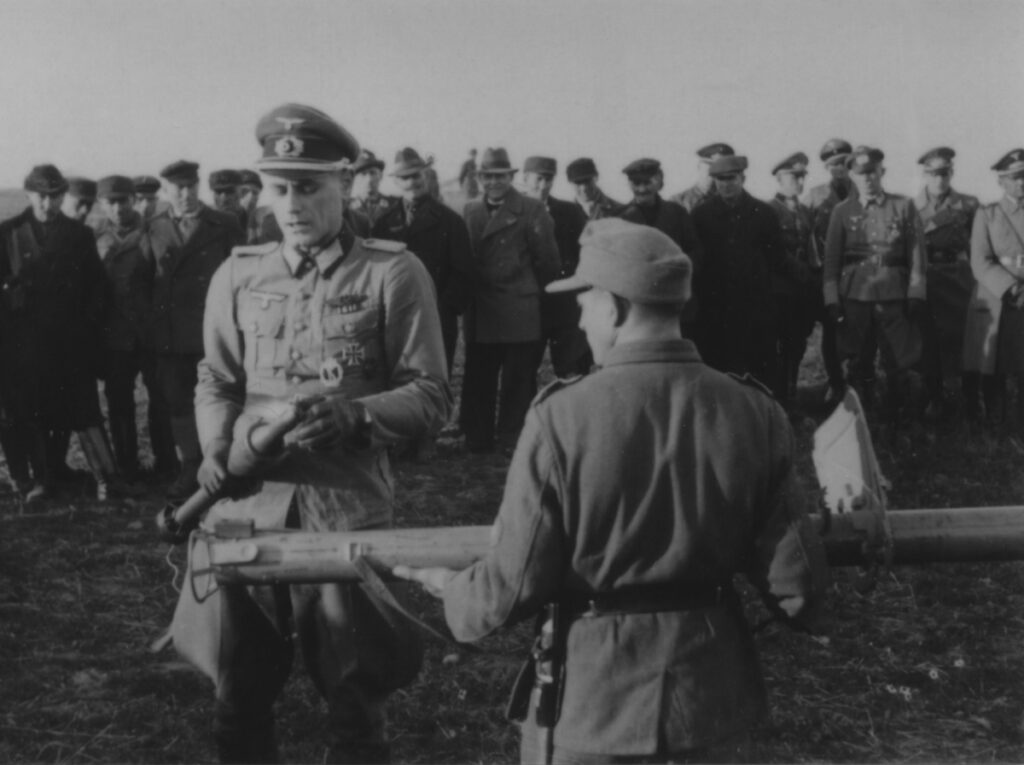
Practical Use
However, quite a few changes would have been necessary for the vehicle to be ready for use in combat. Armor plating is not visible on the drawings, not even the exposed petrol tank between the driver’s legs is protected. And it is located directly in line with the rear of the Panzerschreck. Alone without a helper, the driving gunner would have had to carry out the loading process himself after each shot. Aiming with the rear sight would also have forced him to leave his prone position, depending on the direction of fire. The low weight of only 10kg made the RPzB 54 very mobile as a portable weapon for anti-tank fighters. Would such a vehicle really have been a help as a firing platform?
Post-War

Neander’s hometown of Düren was the target of over fifty air raids during the war. The heaviest on 16 November 1944 cost the lives of more than 3,000 people. His factory also suffered considerable damage and the residential building remained uninhabitable for a long time. According to his diary, all vehicle parts, materials, and tools were looted. Nothing was left of the Panzerhetzer either. At the age of 74, Ernst Neumann had to start from scratch again. He designed a few more technically innovative motorbikes, but then devoted the last years of his life mainly to painting, creating over 100 paintings by the time of his death.
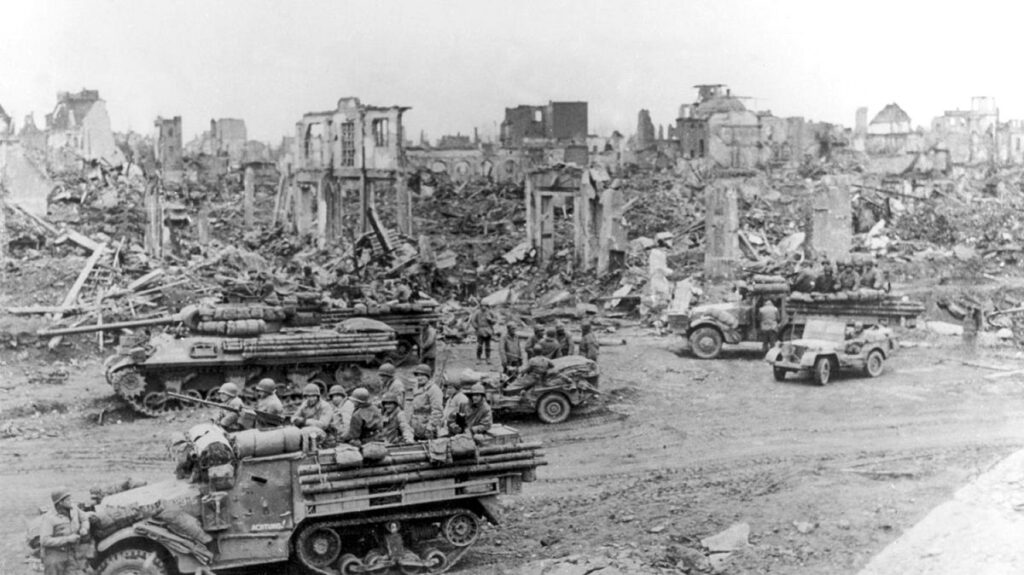
Panzerhetzer III Specs:
| Length: | 118.11in (300cm) |
| Width: | 53.15in (135cm) |
| Height: | 43.70in (110cm) |
| Wheelbase: | 61.22in (155cm) |
| Rear Track Width: | 47.24in (120cm) |
| Ground Clearance: | 9.25in (23,5cm) |
| Fuel Tank Capacity: | 24qts (23 liters) |
| Ammunition Carried: | 13 rounds |



